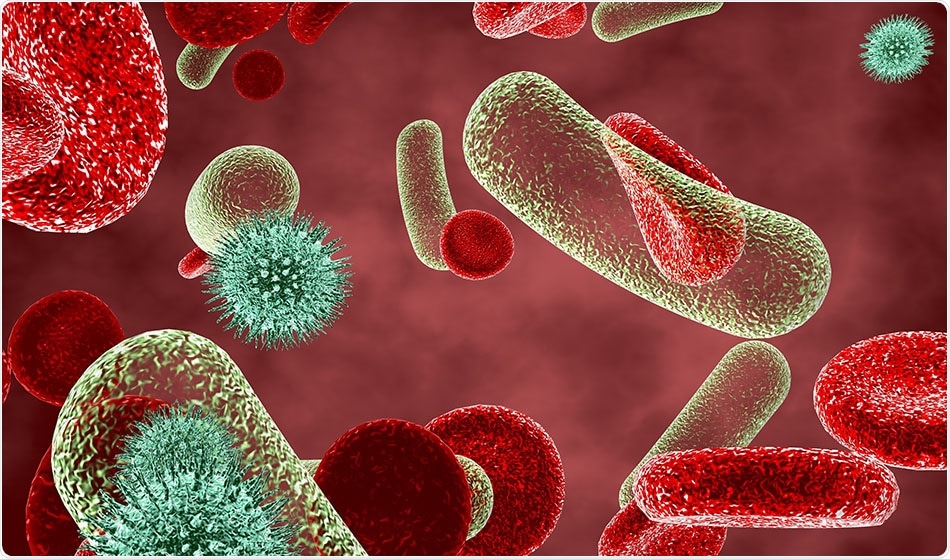
Researchers identify new anti-inflammatory drug target
A collaborative study conducted by the Division of Hemostasis and Thrombosis at Beth Israel Deaconess Medical Center (BIDMC) and the Wyss Institute at Harvard University suggests that parmodulins may provide anti-inflammatory and anti-thrombotic protection to endothelial cells, without interfering with blood clotting.

Credit: Illustration Forest/Shutterstock.com
This discovery makes parmodulins an attractive new drug candidate.
Inflammation is one of the most vital and troublesome processes in the human body. Although inflammatory responses are critical for engaging the immune system to overcome disease and injury, they can also lead to a rise in the production of thrombin, which may in turn cause harmful blood clots and other conditions.
Activated protein C (APC) is a natural anticoagulant protein used for treating severe blood infections and wounds. Although APC possesses anti-inflammatory and other protective effects, its use is limited as its inhibition of thrombin affects the blood's ability to clot, and increases bleeding risk.
Paramodulins are synthetic activated protein C (APC)-mimicking small molecules.
In the present study, the researchers performed a mini preclinical trial of parmodulins' effect on the endothelium. They identified the pathway through which parmodulins function, and demonstrated that they help protect endothelial cells from inflammatory damage.
The transmembrane protein protease-activated receptor 1 (PAR1) is the target protein on which both APC and parmodulins act. PAR1 makes mechanistic analysis difficult as it is present on both endothelial cells that line blood vessels as well as on platelets that circulate through the blood and promote clotting.
PAR1 was earlier identified as a receptor for thrombin; an important factor in the inflammatory process. Yet, when it is activated on the endothelium by APC, it triggers anti-apoptotic, anti-inflammatory, and barrier-fortifying pathways that help in protecting cells from the adverse impacts of inflammation.
Apart from activating PAR1, APC also inhibits the generation of thrombin independently, which is a vital element of healthy blood clotting. However, excessive inhibition of thrombin results in uncontrolled bleeding.
As the researchers knew that parmodulins bind to PAR1, they aimed to find a way to activate endothelial PAR1 and decrease thrombic responses without thinning the blood, and thereby provide a better substitute for APC.
Human endothelial cells were incubated with parmodulin 2 in vitro for 4 hours in order to examine the activity of parmodulins on the endothelium. It was then exposed to lipopolysaccharide (LPS); the thrombin-inducing inflammatory agent, or tumor necrosis factor-α (TNF-α).
In comparison with non-parmodulin-exposed cells, the ability of both the agents to generate thrombin was decreased by more than 50% in the parmodulin-exposed cells. However, the activity of factor V or factor X, proteins that function in blood coagulation was not inhibited by parmodulin.
A blood-vessel-on-a-chip developed at Wyss institute that consisted of microfluidic channels embedded in a clear polymer chip, coated with collagen, and lined by human endothelial cells was used to validate this theory.
To simulate the flow conditions within human blood vessels, whole blood was perfused through the chip along with various pro- and anti-inflammatory compounds.
The researchers found that during a typical inflammatory response, platelets exposed to TNF-α concentrated on the endothelium. However, when exposed to paramodulin 2 prior to TNF-α, was inhibited and the endothelium resumed its normal function.
Thus, the results suggested that parmodulin exposure blocks the thrombotic response of endothelium to inflammatory response, without affecting blood coagulation in humans.
A set of in vitro tests performed by Dr. Christian Peters, at BIDMC, confirmed that activation of PAR1 by parmodulin 2 induces cytoprotective responses in endothelial cells by inhibiting apoptosis, normally induced by thrombin, TNF-α, and the apoptotic alkaloid staurosporine.
This occurs via a signaling pathway that starts with the binding of parmodulin 2 to a specific site on the cytoplasmic side of PAR1.
Dr. Peters commented: "We observed that the cytoprotective response induced by parmodulin 2 happened very quickly, and confirmed its rapid onset in time course and gene expression assays."
In vivo studies in mice indicated that parmodulin 2 decreases the binding of white blood cells to blood vessels and impairs platelet and fibrin accumulation at injury sites during the inflammatory response.
This observation confirmed the anti-coagulant and anti-thrombotic activity of parmodulin 2 seen in vitro.
Parmodulins don’t interact with many of APC's other binding partners. This property makes it much more targeted to PAR1 and reduces other side effects.
According to Professor Rob Flaumenhaft, M.D., Ph.D., Professor of Medicine at Harvard Medical School and Chief of the Division of Hemostasis and Thrombosis at BIDMC, and corresponding author of the paper, the discovery of an anti-inflammatory molecule that prevents endothelial thrombosis and also preserves normal blood coagulation is a major step forward in the treatment of inflammatory diseases.
Professor Flaumenhaft added, "Nearly all other pharmaceuticals that target G-protein coupled receptors like PAR1 bind to the exterior of the receptor. Parmodulin 2 represents a paradigm shift for compounds targeting GPCRs because it acts on internal domains. We are excited to see if we can advance it to clinical trials"






















.png)











No hay comentarios:
Publicar un comentario